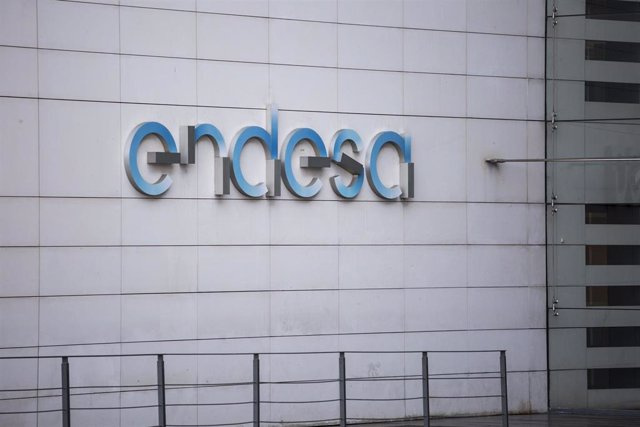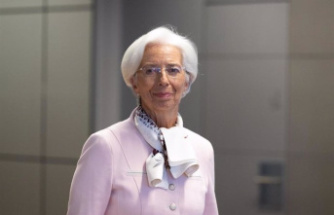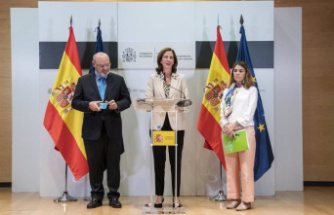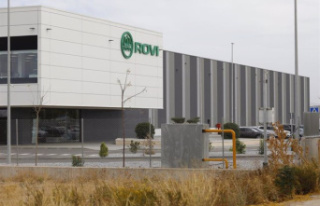It raises its ordinary net result and Ebitda targets for this year and reaffirms a 70% payout for the entire 2023-2025 period
Endesa foresees the distribution of up to 5,390 million euros in dividends among its shareholders in the 2022-2025 period, since the group will extend its policy of a 'pay out' to 70% to the last year of the period, according to what the company informed the National Securities Market Commission (CNMV).
The energy company, which has updated its strategy for the three-year period 2023-2025, has revised its estimate of net ordinary income for this 2022, which was 1,800 million euros, and now raises it to around 2,200-2,300 million euros, up to almost 28% more.
By 2023, Endesa expects this net ordinary result (the basis for the distribution of the dividend) to fall to 1,400-1,500 million euros, although it will recover in 2024 to a range of 1,700-1,800 million euros and in 2025 it will be between 2,000-2,100 million euros. In total, throughout these four years this item could amount to 7,700 million euros.
The group maintains its dividend policy, extending the 70% 'pay out' for one more year, to 2025. However, with the revised increase in its net ordinary income for this year, the dividend for its shareholders for 2022 grows to 1.5 euros per share, from the 1.2 euros expected. The company indicated that this amount will be paid next year in a single payment, based on prudential criteria due to the current market situation.
For the 2023-2025 period, Endesa, of which the Italian Enel is the main shareholder with a 70% stake, foresees dividends for its shareholders of 1 euro for the first year, 1.2 euros for the second and place it already at 1.4 euros per title in 2025.
The company has also revised its gross operating result (Ebitda) target for this year upwards, raising it to 5,000-5,300 million euros, compared to the 4,100 million euros expected.
For the 2023-2025 period, Endesa outlines an Ebitda path that goes from 4,400-4,700 million euros for the first of the years, to 4,900-5,200 million euros for the second, ending with an Ebitda between 5,200 -5,500 million euros.
ESTIMATES AN IMPACT OF 500 MILLION FOR THE GOVERNMENT TAX
With regard to the group's gross debt, it will fall to a range of 12,700-13,200 million euros in 2025 from the estimated closing of 2022 at 18,300-18,800 million euros.
Net debt will grow to around 11,600-12,100 million euros, due to the investment effort in the period and the impact of the new tax on energy companies in Spain, which Endesa estimates will cost it around 500 million euros in the two years in which will be in force.
The average cost of debt will be 2.7% in 2025, from 1.5% at the end of this year. The net debt to Ebitda ratio will remain significantly below the industry average at a healthy 2.1%.
INVESTMENTS OF 8,600 MILLION BETWEEN 2023 AND 2025, 15% MORE
The energy strategy for foresees investments of up to 8,600 million euros in the next three years, 15% more, to grow in renewables and electrification.
Endesa's CEO, José Bogas, highlighted that in the current market context, accelerating the electrification of energy consumption from clean sources "is revealed as the way to achieve a reliable energy system throughout Europe, which reduces price volatility and contribute to economic recovery".
"Governments are looking for ways to ensure affordable prices, security of supply and environmental sustainability. At Endesa, we want to rely on the strengths of our vertically integrated business model to cover an increasing proportion of fixed-price contracts with our customers with our growing emission-free production. This will allow us to reduce our risk profile and guarantee competitive prices for families, companies and administrations," he added in this regard.
In this commitment to promote 'green' energies, it will allocate half of that investment, some 4,300 million euros -39% more than in the previous plan-, to renewables with the aim of adding 4,400 megawatts (MW) -3,000 MW of solar power and 1,400 MW of wind power - of new solar and wind power, to reach a park at the end of the period of 13,900 MW.
With this, the group estimates that 91% of its electricity production in the Iberian Peninsula will be emission-free, from the 72% expected at the end of this year. Endesa thus accelerates the path towards zero net emissions, without the use of carbon storage technologies, set for 2040 for the company as a whole.
This growth in renewables is supported by a portfolio of projects of about 85 gigawatts (GW), of which 14 GW are in a state of mature administrative processing and just over 1,000 MW are already underway. 58% of this portfolio is solar, 16% wind and another 20% corresponds to battery storage projects.
In this sense, the company's plan for the 2023-2025 period already includes 200 MW of this type of storage, a technology that is incorporated as a novelty compared to the previous plan associated with the two large just transition projects won this year in Pego ( Portugal) and Andorra (Aragon).
For its part, the extension of the value offer of services and electricity supply for customers will assume another 900 million euros of the group's investments.
A CUSTOMER PORTFOLIO IN THE FREE MARKET OF 7.3 MILLION
Endese expects a 6% increase in its portfolio of contracts in the free market, up to 7.3 million at the end of the period, which will help the total volume of liberalized fixed-price electricity sales to grow by 2%, up to 51 terawatt hours (TWh).
Throughout the plan, the energy company plans to continue with a price policy for its customers at a fixed price -below the prices of the electricity 'spot' market- and that in 2025 they are even 10% lower than in 2022.
Regarding the volume of its public and private charging points, it estimates that they will multiply by five compared to the end of 2022, reaching 66,000.
Meanwhile, it will allocate another 2,600 million euros of its investments to the digitization of the distribution network as a key asset to facilitate the energy transition, slightly below the 2022-2024 period to adapt to a context of greater regulatory uncertainty.
This investment is distributed in three axes: digitization, which represents 42%; the adaptation of the network to the new needs of customers, such as self-consumption or distributed generation, which absorbs another 34%; and another 24% to reinforce quality and resilience, with the aim of reducing both losses and interruption time.
Regarding the regulatory frameworks of the distribution activity, the company considers that they should facilitate its transformation to achieve the goal of zero net emissions.













